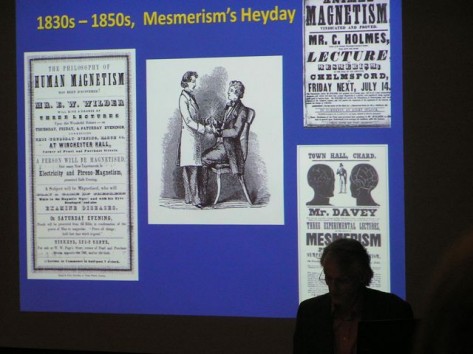Last month’s Cheiron conference in Montreal brought together historians of psychology from Europe, North America, New Zealand, Canada and Australia.
The conference was a four day talkfest with presentations on topics as diverse as the origins of mesmerism, the history of intelligence testing and the implications of modern-day psychological scandals like the Stapel fraud case.
A gaggle of Milgram scholars (or Milgramaniacs as I prefer to call them) descended on Montreal to be part of a panel about the obedience research. Ian Nicholson presented on the obedience experiments as a form of torture. Steve Gibson played snippets of the experiments to demonstrate that the tightly controlled and highly standardized version that Milgram later presented was far from it. My long-time email pen pal, New Zealander Nestar Russell applied the term the ‘banality of evil’ to the bureacratic organisation of the research itself.
The four of us share a particular bond. Each of us has pored over Milgram’s papers. Each of us has spent more time than is healthy listening to the recordings of Milgram’s experiments, hearing first hand the disturbing and upsetting events as they unfolded. Each of us has discovered that there is far more to the story of the obedience experiments than meets the eye.
The Stanley Milgram papers held at Yale are a rich source of information that subverts and casts doubt on the story we’ve come to know so well.
So the question is why, given how vigorously Milgram defended himself during his lifetime, did he leave behind papers and recordings that so undermined his own accounts of the research process and his role in it?
Was it simply that he forgot, in the twenty two years between the end of the experiments and his death in 1984, exactly what those 157 boxes contained? Was he simply a hoarder who could not throw anything away? Or did he deliberately bequeath a story he couldn’t or wouldn’t tell himself? I have no idea.
All I know is that I’m grateful that Milgram himself and later his wife Alexandra, left those boxes intact. It’s allowed us to unearth and bring to light a more compelling and complex truth than the neatly packaged and fossilised version presented in psychology textbooks for the past 50 years.





